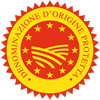Description
Fichi di Cosenza PDO are dried figs belonging to the species Ficus carica sativa, of the Dottato (or Ottato) variety.
Production Area
The production area of Fichi di Cosenza PDO is within the territory between 0 and 800 metres above sea level in the Province of Cosenza, in the Calabria region.
Production Method
The fruit are left to ripen on the tree until they reach an established level of wilting, ascertained by the skin colour turning from green to yellowish-beige and the stalk bending. Thanks to the mild climate, the fruit dry on the tree, reaching an average water content of 39-43%. At this stage the figs are known in local dialect as passuluni. Harvesting usually takes place between August and October and is carried out exclusively by hand. After harvesting, the drying process continues for a period of time that varies according to how ripe the fruit are and the method being used. This can be carried out in two different ways: the traditional method of being left in direct sunlight for 3-7 days, with the fruit raised off the ground on bamboo structures (cannizze) so as to allow for transpiration and water loss; or the “protected” method, which takes place inside greenhouses made of glass or other transparent materials, with a maximum temperature of 50 °C and for no longer than five days. Initially the figs must be turned by hand at least twice a day to ensure they dry evenly. Once the figs are dried, they undergo water treatments which wash and sterilise the fruit so that they can be sold. 3 kg of fresh fruit are needed to obtain 1 kg of dry figs.
Appearance and Flavour
Fichi di Cosenza PDO are ovoid to round in shape and have a short, thin stalk. The skin colour varies from bright straw-yellow to light beige; the pulp has relatively few achenes, which are very small and not particularly crunchy, and has a sweet, almost honey-like flavour. The fruit can be small (more than 85 figs per 1 kg), medium (from 66 to 85 figs per 1 kg), and large (from 55 to 65 figs per 1 kg).
History
Fig cultivation probably dates back to the time of the Magna Graecia period and its presence in the area of Cosenza is documented from the 16th century. In the important 1812 document the Statistics of the Kingdom of Naples, also known as the Statistica Murattiana, it can be seen that figs from Cosenza were already being exported outside of the Kingdom of Naples. The Dottato variety, used for the production of Fichi di Cosenza PDO, was also described by Anton Maria Salvini in 1715 as being of “particular value”, so much so that it was exported overseas; in 1920, this variety was found in the United States with various synonyms, among which, Kadota.
Gastronomy
As Fichi di Cosenza PDO are a dried product with a high sugar content, they have a fairly long shelf life. However, it is still best to keep them in a cool, dry place. They can be eaten at both the beginning and end of a meal. The so-called crucetti (fig crosses) are a typical recipe in this region, where the figs are arranged in the form of a cross and covered with walnuts or almonds, citrus peel and fig honey before being oven-baked. Other traditional dishes include jette (fig plaits) and corolle (garlands).
Marketing
The product is marketed as Fichi di Cosenza PDO. They are available in the following sizes: small, medium and large. They are available from January to May and from October to December. They can be sold in wooden trays or containers made of other food-grade materials, weighing between 50 g and 1 kg, or in cardboard boxes which can weigh up to 25 kg.
Distinctive Features
Fichi di Cosenza PDO are different from other figs of the same variety grown elsewhere because they are parthenocarpic: thanks to this characteristic, they have small, fine achenes which make the pulp .
















![[Roma] Il Consorzio dei Fichi di Cosenza DOP lancia "DOP On Board, eccellenze ad alta quota"](https://www.qualivita.it/wp-content/uploads/2024/07/fichi-cosenza-DOP-On-Board-210x118.jpg)

